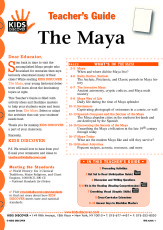Machu Picchu — the ancient city of the Incas. A lost city. An abandoned city. A hidden city. One of the New Seven Wonders of the World.
What’s the story on this mysterious place? To find out…
Rewind to 1450, around the time Machu Picchu was built.
Before the Spanish conquerors arrived, the Incas dominated a vast area in what is now South America. The empire controlled a 3,000-mile swath of land that stretched east from the Pacific Ocean across the Andes Mountains to the jungle.

Near Cuzco, the capital of this great kingdom, was an extraordinary city built almost 8,000 feet above sea level on a flat ridge between two high peaks of the Andes. Surrounded by agricultural terraces, the city was small, only about five square miles. But it had more than 150 buildings — from palaces and temples to baths, storage rooms, and homes for a population of about 800. This was Machu Picchu.

Why was Machu Picchu built — so high in the mountains, so remote? What was its purpose? Was it a defensive stronghold? A retreat for the Inca ruler? An escape for Inca elites wanting to get away from the noise of the cities below?
We will never know for sure. The Incas had no writing system. They left behind no histories, no records, no diaries.
Even though they had no written language, the Incas developed one of the most sophisticated societies in the pre-industrial world. They had an effective system for taxation, for construction, for warfare, for providing goods and services to their people.
But they could not compete with the Spanish conquistadors (the adventurers and explorers of the Spanish and Portuguese Empires) who brought horses, superior weaponry, an intense desire for gold — and disease, especially small pox.
By 1572, the Spanish had completely conquered the Incan empire and Machu Picchu was abandoned.
Had the Spanish attacked the city? Had they taken control of it as they had done elsewhere in the empire? No.
Machu Picchu was invisible from the foot of the mountains. There is no evidence the conquistadors even realized it existed.
Why, then? Why was the city abandoned?
One theory is that a small pox epidemic killed most of the residents and sent the rest fleeing for their lives. Whatever the reason, by 1572 Machu Picchu was a ghost town, left to return to nature.
Fast-forward another 339 years.
Enter Hiram Bingham, an explorer and professor of South American history from Yale University. Chopping his way through the dense jungle in 1911, Bingham and others, with the help of local residents, beheld what was to be hailed as one of the greatest archeological finds of the century — ancient structures, amazingly well–preserved, but covered by vegetation.
Bingham and others excavated the site. Later he wrote a book about his discovery: Lost City of the Incas. After the book was published, waves of tourists descended on Machu Picchu…and they haven’t stopped coming.

discovery: Lost City of the Incas. After the book was published, waves of tourists descended on Machu Picchu…and they haven’t stopped coming.
That brings us to the present.
Let’s join a tour of this mysterious city. It’s already in progress.


We stop to examine a stone structure. No mortar here. Only blocks of granite carved with astonishing precision. Some stones have as many as 30 surfaces. Not even a sheet of paper can be made to slide between the stones.
The structures at Machu Picchu have withstood earthquakes for almost 600 years. The reason may lie in the details of their design. Doors and windows are shaped like trapezoids. Most corners are rounded, not squared off. And the corners of interior rooms actually lean into the room. These features help the structure withstand anything the Earth can “hand out.”

Someone in the group speculates about how the structures were built. After all, the building blocks weigh up to 50 tons, and in the mountainous terrain the Incas did not make use of the wheel. The answer: Organization. People. Muscle power.
We head toward the sacred plaza to find evidence that Machu Picchu was an astronomical observatory. There, in the plaza is a stone structure that marks the exact date and time of the equinoxes. Called Intihuatana, or “Hitching Post of the Sun,” this stone sundial was a site of important Incan ceremonies.

Next, we meander toward the outskirts of the city to see the stone terraces that have been cut into the steep mountainside. The terraces stopped erosion and provided level land for growing crops like maize and potatoes. Apparently, the Incas were skilled farmers as well as scientists and astronomers.

Finally, we head to the Inca Trail, where we will be among the tens of thousands who walk this path each year. This narrow stone trail leads us down the mountain where we’ll find our bus back to Cuzco. On the bus ride, we’ll traverse the mountainside making more than a dozen hairpin turns.
At least we’ll be riding a bus. The original inhabitants of this land had only the strength of their legs and their llamas for transportation.


